14.4 Older Adulthood
Do you think much about old age—life when you’re 65, or 75, or 85? If you’re like most people reading this book, older adulthood is so far away that you don’t give it much thought.
For many years, developmental psychologists didn’t give it much thought, either; they primarily studied life’s early years. But more recently, researchers have forged the field of lifespan developmental psychology, which explores human development from the start of life to old age (Baltes, Staudinger, & Lindenberger, 1999). They did so, in part, in response to changes in the human population.
The human life span has lengthened considerably (see Figure 14.17 for U.S. data). In wealthy nations with modern medical care, people born today can expect to live twice as long as those born only a few generations ago. This increases the population of older adults.
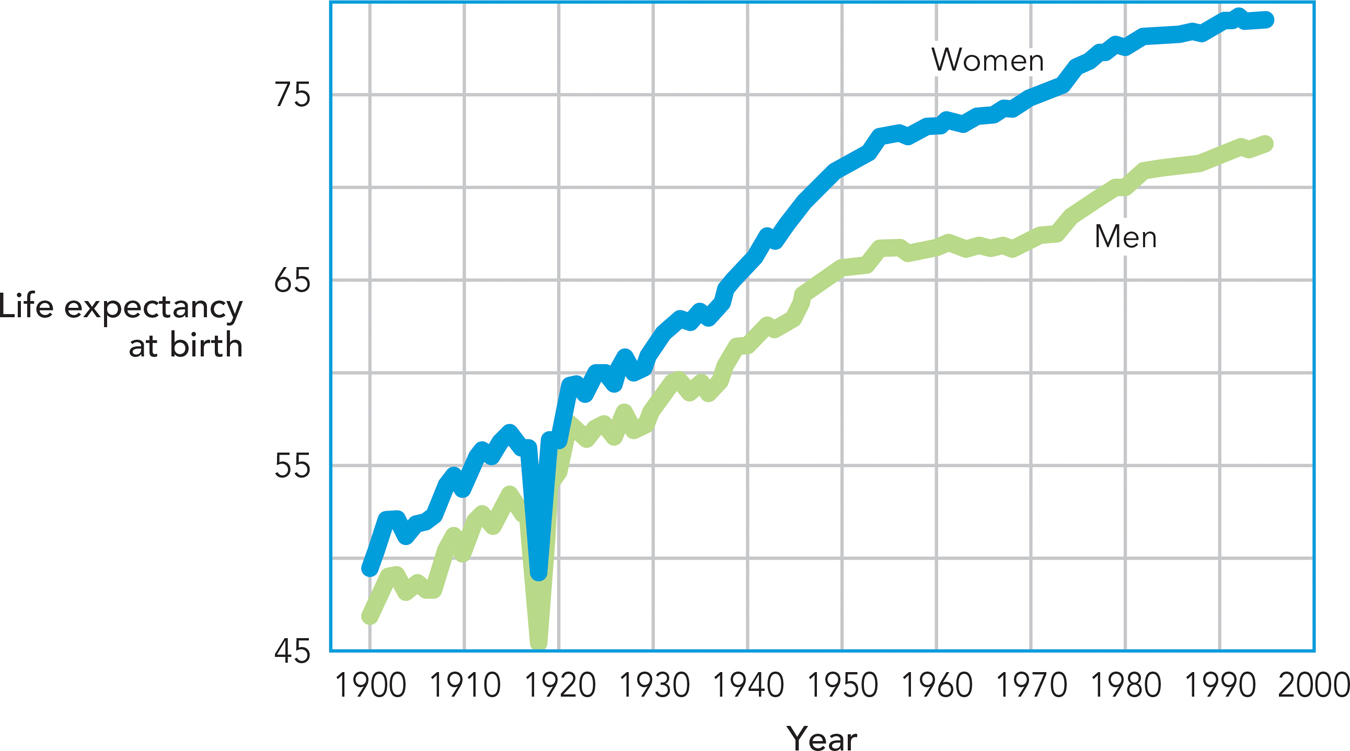
figure 14.17 Life expectancy in the United States People are living a lot longer than they used to. Except for a decline around 1918 (as a result of a flu pandemic, as well as casualties of World War I), life expectancy for women and men in the United States generally increased throughout the twentieth century (Wilmoth, 2000).
Lifespan developmental psychology explores a segment of life that did not exist in the evolutionary past. For example, 40,000 years ago, typical humans lived only into their late 20s or early 30s (Wilmoth, 2000). Evolution thus could not shape psychological mechanisms for solving problems uniquely encountered by 70- and 80-year-olds (Baltes et al., 1999). This makes older adulthood unique with respect to psychology’s nature–nurture questions (see Chapters 1 and 4). Nature does not provide psychological mechanisms that evolved to solve the unique problems of older adulthood. Yet, as you’ll see, older adults are quite good at solving them.
Well-Being in Older Adulthood
Preview Question
Question
 Do most people experience declines in well-being in older adulthood?
Do most people experience declines in well-being in older adulthood?
If you’re young now, old age might sound depressing; you’ll be slower, weaker, and grayer. Yet most older adults are not depressed about their age; their psychological well-being commonly is as high as that of younger persons (Baltes & Graf, 1996; Brandtstädter & Wentura, 1995). This is true despite the many significant challenges that older adults face (e.g., managing chronic health problems; Christensen et al., 2009). A 4-year-long study of adults ranging in age from their late 50s to early 80s found that the older participants reported physical declines but a level of personal contentment that matched younger persons (Rothermund & Brandtstädter, 2003). Older adults knew they were declining physically, but didn’t seem to mind!
WHAT DO YOU KNOW?…
Question
17
gFkmmiYuUAPi9OptuR4ZbKEmklOyBFNPbPzsc49rG/bqcrLmj5X8VCOWKpJX+08wVLS2tzj1ftabcLT7Gg5/5KSzi2UhBmKeP7i0TuJvc5uEPVMmazmokarSXoNKALNGye9zb6k065wdPlg9nX508u+EZHbG+tHyVZgxAcxdz9HX8ijJSYbcD3W7bBBd2qUK8IcBBS9qSKR7FjX3JyZUJf2qZBG5kQSE4CuYIA==
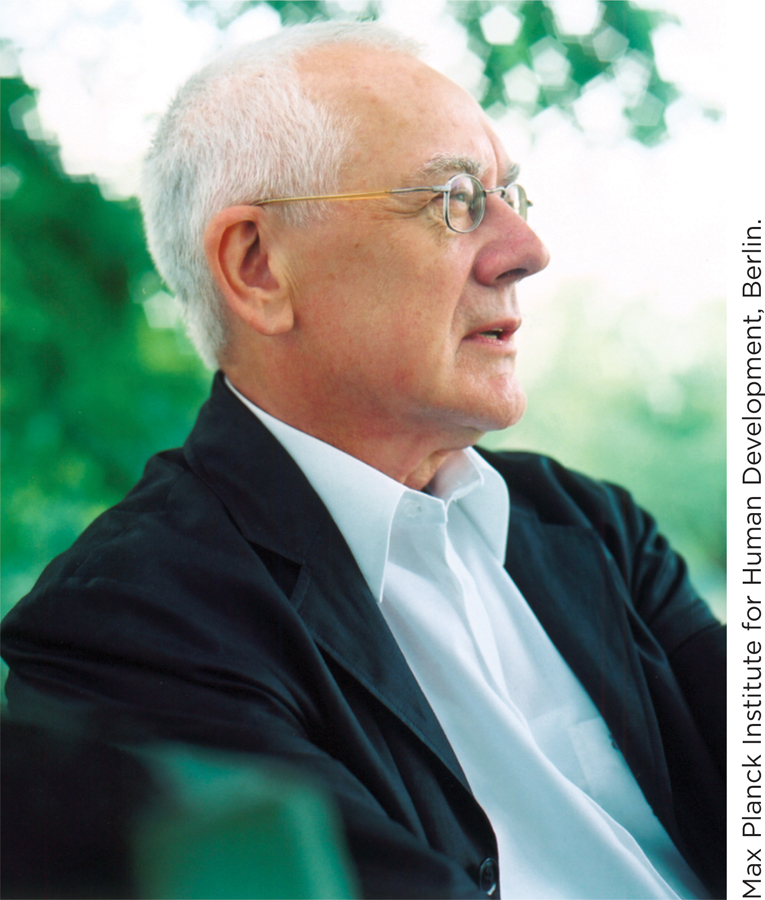
German psychologist Paul Baltes, whose research and theories provided critical foundations for the contemporary psychological study of lifespan development.
Goals, Strategies, and the SOC Model
Preview Question
Question
 How do selection, optimization, and compensation contribute to successful psychological adjustment in older adulthood?
How do selection, optimization, and compensation contribute to successful psychological adjustment in older adulthood?
How do so many older adults maintain a sense of well-being? They prioritize. They determine what’s important to them, devote time to that, and avoid wasting time on irrelevant tasks. This prioritization is described in the selection, optimization, and compensation (SOC) model of successful aging devised by Baltes and colleagues (Baltes, 1997; Freund, 2008; Freund & Baltes, 2002). They identify three psychological processes that promote positive personal development: selection, optimization and compensation.
Selection is the process of setting personal goals for a given period of your life. Older adults often narrow down their goals, focusing on fewer tasks than when they were younger. They “concentrate all … [their] energy on a few things” and “always focus on the one most important goal at a given time” (Freund & Baltes, 2002, pp. 661–662).
Optimization is the process of devising plans to achieve goals that have been set. People who optimize say they “keep working on what I have planned until I succeed” and that “when I choose a goal, I am also willing to invest effort in it” (Freund & Baltes, 2002, pp. 661–662).
Compensation is the identification of alternative strategies to achieve goals, if at first you don’t succeed. Everyone experiences setbacks. But older adults, in particular, need compensation to adjust to setbacks caused by physical declines.
A person taking medication on a regular schedule, for example, may compensate for memory declines by buying a calendar pill box.
These strategies are simple, yet successful. Older adults who are better at selection, optimization, and compensation experience more positive emotions, a higher sense of personal well-being, and a greater sense of purpose in life (Freund, 2008; Freund & Baltes, 2002).
The SOC model does not specify which goals an older adult should pursue, however. Its message is that in older adulthood, whatever you choose to do, you should avoid doing too many things at once; stick to goals once they are set; anticipate setbacks; and plan ways to compensate for them.
WHAT DO YOU KNOW?…
Question
18
Match the process on the left with the statement that illustrates it on the right.
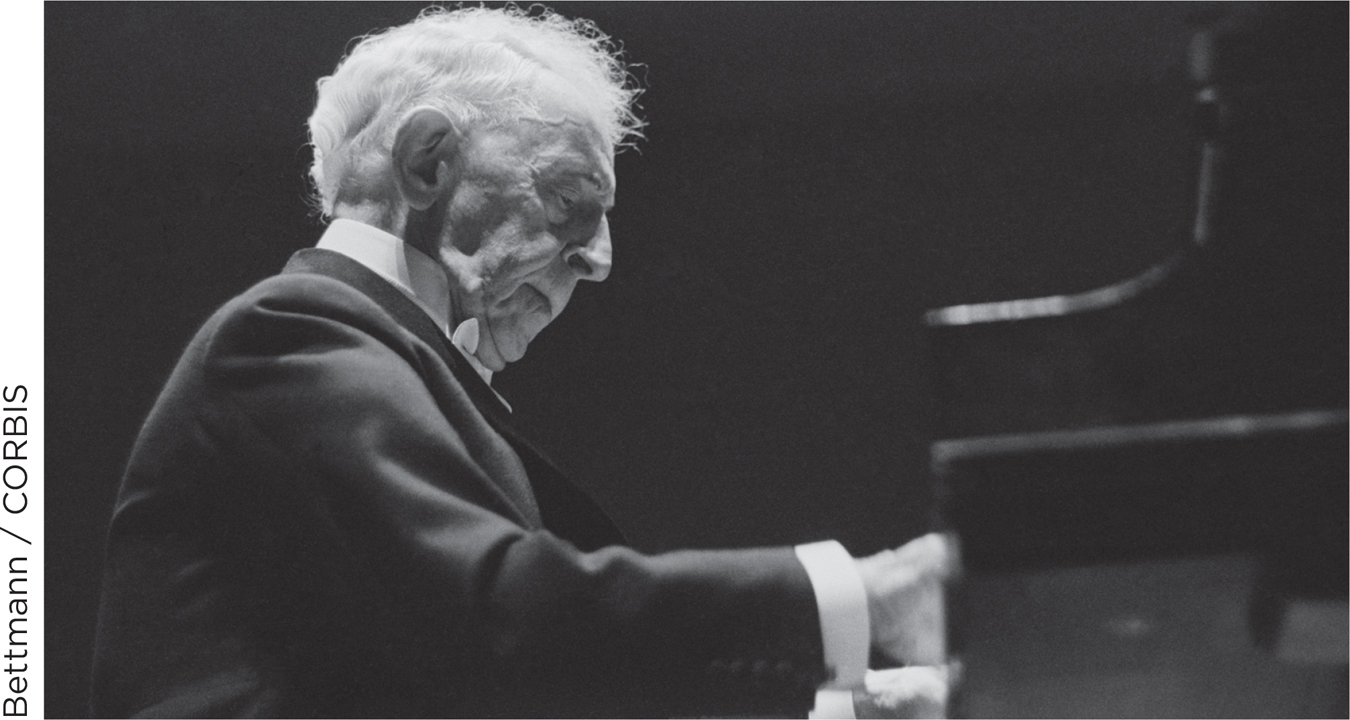
Strategies for successful aging Pianist Arthur Rubinstein did not retire from stage performances until the age of 89. How did he keep playing for so long? He selected a small number of pieces to play, practiced them frequently to optimize his skill, and compensated for a loss in muscular speed by playing slow passages more slowly than he had in his youth (thus making the fast passages seem faster). These are the three strategies of Baltes’s selection, optimization, and compensation model of successful adult aging.
Motives and Socioemotional Selectivity Theory
Preview Question
Question
 How does knowing you’re at the end of your life affect how you want to spend your time?
How does knowing you’re at the end of your life affect how you want to spend your time?
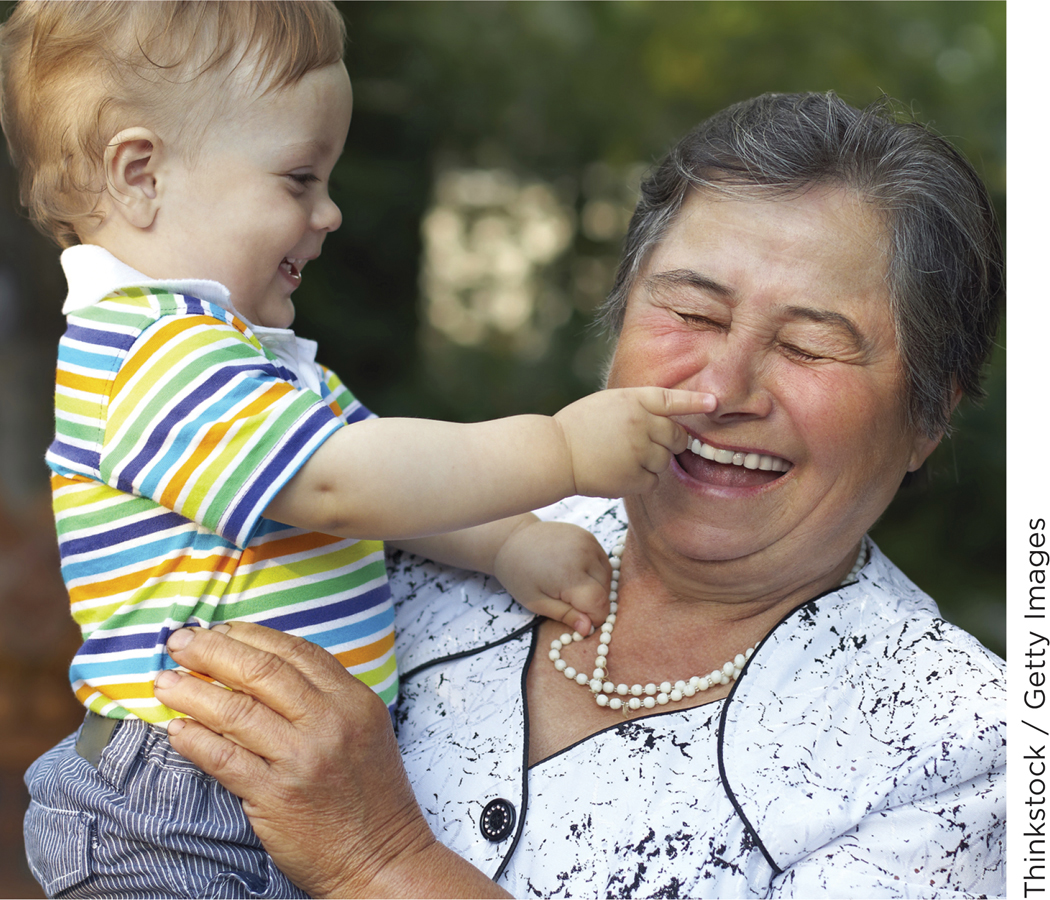
Blissful grandparenthood Research indicates that older adults show a strong preference for spending time on emotionally significant activities, such as playing with grandchildren.
No one knows what the future will bring. But if you’re in your teens or early 20s, you do know that there’s likely to be a lot of it; you can expect more than a half-century of future ahead of you. Older adults, however, know that more of life is behind them than ahead of them.
Socioemotional selectivity theory, developed by Laura Carstensen (1995, 2006), explains how perceptions of the amount of time remaining in life affect motivation. Young adults, knowing they have decades of life ahead, are motivated to pursue activities with long-term payoff: acquiring information and skills (which has long-term professional benefit) and engaging in activities that develop a firm sense of self and personal identity (which is a foundation for personal development later in life). Older adults, knowing they have fewer years remaining, are less attracted to activities with only long-term benefit. They prefer activities that are emotionally meaningful (e.g., spending time with family and close friends). Motives thus shift across the life course (Figure 14.18).
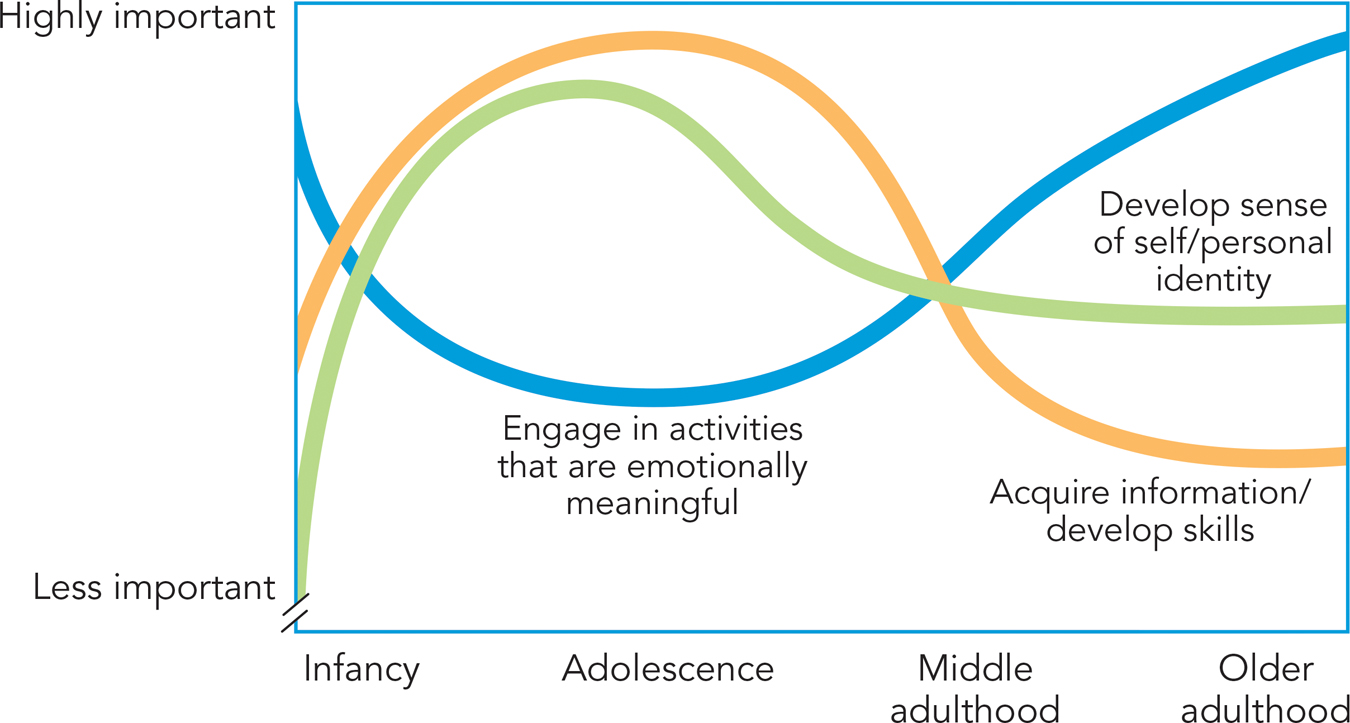
figure 14.18 Socioemotional selectivity theory Carstensen’s socioemotional selectivity theory predicts that the salience of social motives—that is, the relative importance of the motives to individuals—will change across the life span, due to people’s awareness of the amount of time left in their life (Carstensen, 1995). The curves show shifts in three social motives: seeking information, developing self-concept, and regulating emotion in order to maintain an emotionally positive day-to-day life. In older adulthood, people are most motivated to experience social interactions—with family or longtime friends—that are emotionally meaningful to them.
Research confirms the theory’s predictions. When choosing to spend free time with (1) a family member, (2) an author of a book recently read, or (3) an acquaintance with common interests, older adults, unlike younger adults, more frequently chose #1 (Fung, Carstensen, & Lutz, 1999). When shown advertisements, older adults preferred ones with emotion-based, rather than information-based, messages (Fung & Carstensen, 2003; Figure 14.19). These findings are consistent with socioemotional selectivity theory’s prediction that older adults are more attracted to activities that are emotionally meaningful.

figure 14.19 Advertising, age Researchers showed younger and older adults pairs of advertisements that highlighted a single product’s benefits in two ways: its benefit to acquiring information about the unknown, or its benefit to maintaining a positive emotional life (Fung & Carstensen, 2003). Consistent with the prediction of socioemotional selectivity theory, older adults preferred advertisements such as the one on the left, which emphasizes an emotional appeal, to the one on the right, which highlights the knowledge gained from new experiences.
WHAT DO YOU KNOW?…
Question
19
uEhOqMMDlzt5EGfYE3rrziyZF0tJWnF/wLTP7U3tdl/3d+H0eNMRiVKFK+is70T72BcC/zUgFMIuqhc9QaCqnimgqv4Ta5mJ7Q8kK0l/mT8SGJsRQtnpe9sa3shdNTtS/SivgbJIJwt4YF2jFQDJWQ==
According to socioemotional selectivity theory, activities that are emotionally meaningful will be most motivating for older adults.
These research methods should sound familiar to you—they are the same ones you encountered in this chapter’s Try This! activity. Your responses to the Try This! items may have differed from those of someone a few decades older than yourself—or from your own responses if you answer these same questions a few decades from now.
Accentuating the Positive
Preview Question
Question
 Does getting older cause people to dwell on the negative?
Does getting older cause people to dwell on the negative?
You have seen two ways that older adults maintain emotional well-being: by (1) using SOC strategies and (2) investing energy in activities that are emotionally meaningful. A third way is the positivity effect: When recalling and contemplating personal experiences, older adults pay more attention to positive than to negative information (Mather & Carstensen, 2005).
In research on the positivity effect, adults of varying ages were shown pictures of two types: emotionally positive (e.g., babies) or negative (e.g., bugs). Later, when their memory for the pictures was tested, young and middle-aged adults remembered both kinds of pictures equally well. Older adults (aged 65 to 80), however, displayed a positivity effect: They had much better memory for the positive pictures (Charles, Mather, & Carstensen, 2003).
The positivity effect is also evident in neural activity. When people view emotionally positive and negative pictures, younger adults’ brains respond equally to both picture types, but older adults’ brains respond more strongly to positive than negative images (Mather et al., 2004).
Has evolution equipped humans with strategies, such as the positivity effect, that enhance well-being in older adulthood? That may sound plausible, but it is extremely unlikely. As noted earlier, principles of evolution seem incapable of explaining the present-day tendencies of older adults (Baltes, 1997). Rather, the explanation must involve older adults’ strategies for making the most of the time that is left to them.
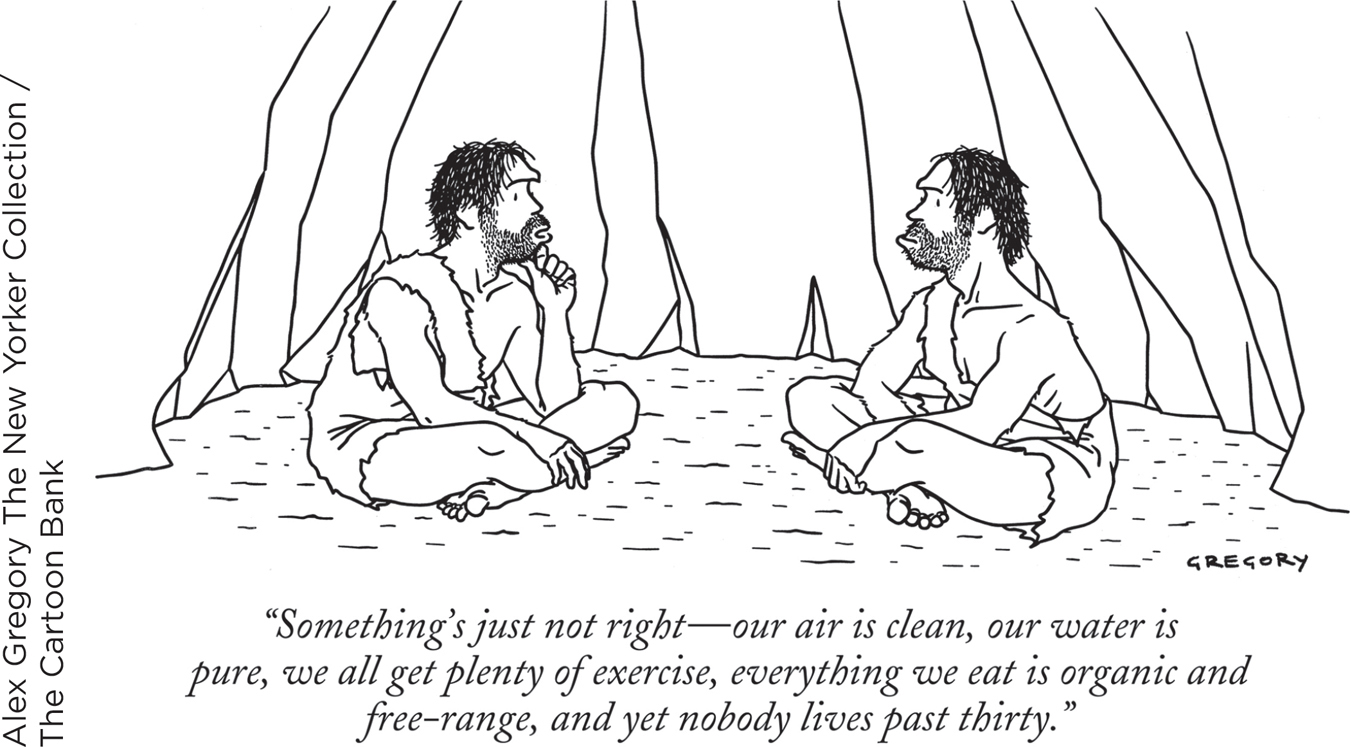
WHAT DO YOU KNOW?…
Question
20
C4EYe6hn+j9cYssoRkLWMv+FuLbf/unxbrjiiu1x6zjCQy9GSXK/r5TzfEq6gI5CogJU4VSMjx6HFwhn+ZWf17arp6xxa1cDJ6vBvFNGvwSNesLXekVZI5vdnsquyciIWkpDEqBcGXADxiXqZ9aXT/wbFuxWtzep9Ktr1IDr/03DfGaLuRmIIdqDjZ9muyv1wipF9Af1xse+HcU4Yt7wm+e3fRfe0Eqt0MaaAyUU/sYhFU/1e0qEin41jUziCgWcfA62Dma3Y0wKQ9rGmGpR2swZLgLlVyNV9qsduQfnJ+d/s7hRVMDkwMW2IUtxfePscSoR0EkkH4RQV+/TFtfQ0IYFET+8/C9bHUYAPABBp6VZjB1fkwwcLdo3/HaON4GXI1D4n8aKRKtXCjFzeIEa5mYW9vj3jKi9MA2/hA/VNn1zcIjAcY8xAiZozDhqSaG3v1SrBapCAj2HzP++1uQDduYDmjrBglfKoXsjH+yR9Y+gc37AqbFR6gY/P67J7iYozNDYB65gcbg=
The older adults will be more likely to remember the photo of the flowers and the young and middle-aged adults will be equally likely to remember both photos.

 Do most people experience declines in well-
Do most people experience declines in well-
 How do selection, optimization, and compensation contribute to successful psychological adjustment in older adulthood?
How do selection, optimization, and compensation contribute to successful psychological adjustment in older adulthood?
 How does knowing you’re at the end of your life affect how you want to spend your time?
How does knowing you’re at the end of your life affect how you want to spend your time?


 Does getting older cause people to dwell on the negative?
Does getting older cause people to dwell on the negative?